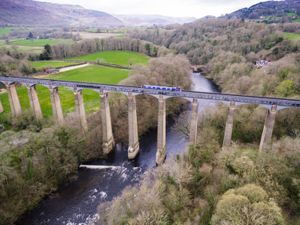Border landmark found to be world’s most captivating Unesco site in eye test
The Pontcysyllte Aqueduct has come out on top in a study exploring the most eye-catching Unesco landmarks.

In a study that included the sandstone city of Petra in Jordan, Cambodia's Angkor Wat and the Taj Mahal, Wales' Pontcysyllte Aqueduct has been found to be the most eye-catching Unesco site in the world.
Research undertaken by Explore Worldwide used eye-tracking software to measure how captivating some of the world's landmarks are.
The travel company asked participants to look at a series of photographs of 52 Unesco sites, while the eye-tracking technology measured which images drew attention the quickest and longest.
And of the list of world wonders, the Pontcysyllte Aqueduct and Canal was found to be the most eye-catching site in the world.

The Explore Worldwide study said the site "promises to leave you spellbound" dubbing the aqueduct an "extraordinary feat of civil engineering".
Designed by Thomas Telford, the impressive structure was completed in 1805 after ten years of work, creating what is still the longest aqueduct in Great Britain as well as the highest canal aqueduct in the world.
With 180 eye 'fixations' at an average gaze duration of 0.31 seconds, the eye-tracking study placed the aqueduct above the cityscape of Rio de Janeiro (179 fixations averaging 0.31 seconds) and the Canadian Rocky Mountains (159 fixations averaging 0.31 seconds).
The Statue of Liberty, the Palace of Versailles and the Galapagos Islands were also amongst the sites bested by Telford's creation.





